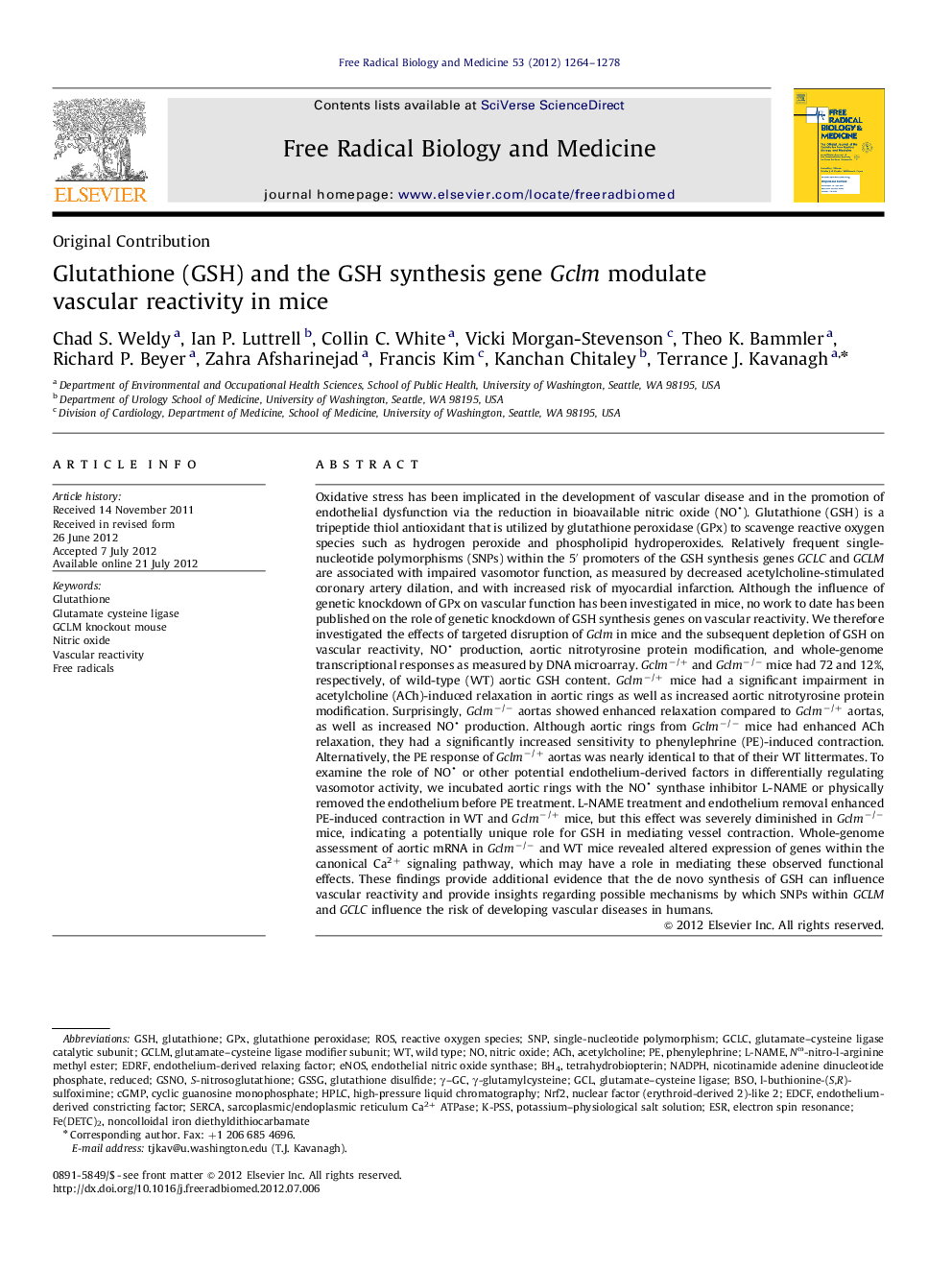| کد مقاله | کد نشریه | سال انتشار | مقاله انگلیسی | نسخه تمام متن |
|---|---|---|---|---|
| 1908648 | 1046677 | 2012 | 15 صفحه PDF | دانلود رایگان |

Oxidative stress has been implicated in the development of vascular disease and in the promotion of endothelial dysfunction via the reduction in bioavailable nitric oxide (NO). Glutathione (GSH) is a tripeptide thiol antioxidant that is utilized by glutathione peroxidase (GPx) to scavenge reactive oxygen species such as hydrogen peroxide and phospholipid hydroperoxides. Relatively frequent single-nucleotide polymorphisms (SNPs) within the 5′ promoters of the GSH synthesis genes GCLC and GCLM are associated with impaired vasomotor function, as measured by decreased acetylcholine-stimulated coronary artery dilation, and with increased risk of myocardial infarction. Although the influence of genetic knockdown of GPx on vascular function has been investigated in mice, no work to date has been published on the role of genetic knockdown of GSH synthesis genes on vascular reactivity. We therefore investigated the effects of targeted disruption of Gclm in mice and the subsequent depletion of GSH on vascular reactivity, NO production, aortic nitrotyrosine protein modification, and whole-genome transcriptional responses as measured by DNA microarray. Gclm−/+ and Gclm−/− mice had 72 and 12%, respectively, of wild-type (WT) aortic GSH content. Gclm−/+ mice had a significant impairment in acetylcholine (ACh)-induced relaxation in aortic rings as well as increased aortic nitrotyrosine protein modification. Surprisingly, Gclm−/− aortas showed enhanced relaxation compared to Gclm−/+ aortas, as well as increased NO production. Although aortic rings from Gclm−/− mice had enhanced ACh relaxation, they had a significantly increased sensitivity to phenylephrine (PE)-induced contraction. Alternatively, the PE response of Gclm−/+ aortas was nearly identical to that of their WT littermates. To examine the role of NO or other potential endothelium-derived factors in differentially regulating vasomotor activity, we incubated aortic rings with the NO synthase inhibitor L-NAME or physically removed the endothelium before PE treatment. L-NAME treatment and endothelium removal enhanced PE-induced contraction in WT and Gclm−/+ mice, but this effect was severely diminished in Gclm−/− mice, indicating a potentially unique role for GSH in mediating vessel contraction. Whole-genome assessment of aortic mRNA in Gclm−/− and WT mice revealed altered expression of genes within the canonical Ca2+ signaling pathway, which may have a role in mediating these observed functional effects. These findings provide additional evidence that the de novo synthesis of GSH can influence vascular reactivity and provide insights regarding possible mechanisms by which SNPs within GCLM and GCLC influence the risk of developing vascular diseases in humans.
Figure optionsDownload high-quality image (175 K)Download as PowerPoint slideHighlights
► Mice lacking the glutathione synthesis gene Gclm have compromised vascular reactivity.
► Gclm−/+ mice have impaired acetylcholine-stimulated vessel relaxation but Gclm−/− mice do not.
► Gclm−/− mice have enhanced phenylephrine-stimulated vessel contraction but Gclm−/+ mice do not.
► NO synthase inhibition/endothelium removal revealed differences in phenylephrine contraction.
► These data provide insight regarding the role of glutathione synthesis in vascular function.
Journal: Free Radical Biology and Medicine - Volume 53, Issue 6, 15 September 2012, Pages 1264–1278